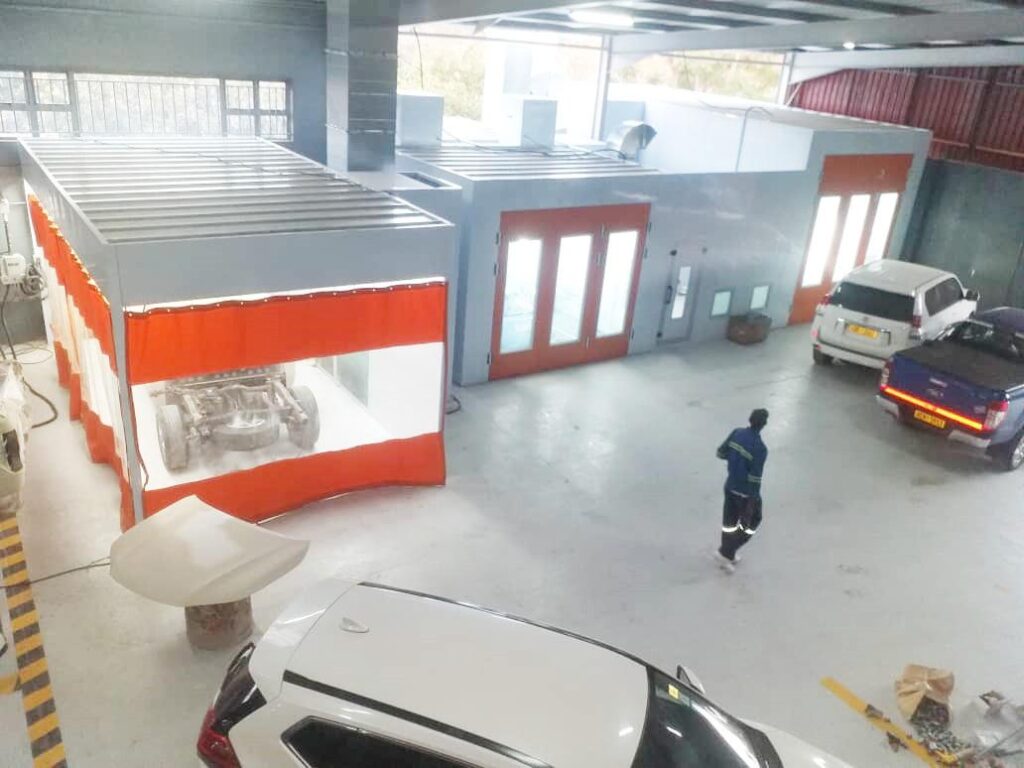Unlocking the Secrets to Effective Spray Booth Cleaning: Proven Techniques for Optimal Performance
To achieve a pristine spray booth, it is crucial to eliminate all potential sources of dirt and to conduct a thorough inspection of every interior surface. Before starting the cleaning process, ensure that all fans and equipment are turned off to guarantee safety. Employ suitable solvents, vacuums, or pressure washers to meticulously clean the walls, floors, and filters. Regular maintenance of the exhaust systems is essential, alongside managing moisture levels and replacing filters every three months to retain optimal airflow and improve the quality of your finishes.

Maintaining a spotless spray booth is vital for securing outstanding finishes, minimising the need for expensive reworks, and prolonging the lifespan of your equipment. A clean booth not only enhances airflow but also reduces the likelihood of contamination, ensuring compliance with essential safety and environmental standards. By prioritising cleanliness, you significantly boost the overall efficiency of your operations, leading to superior quality outputs and increased productivity in your business.
Whether you manage a crossdraft booth or a sophisticated side draft system, it is essential to implement and adhere to consistent cleaning protocols to uphold optimal booth maintenance and ensure top-notch performance.
Understanding the Vital Role of Regular Cleaning in Maintaining Quality in Your Spray Booth
The build-up of dirt, overspray, and moisture can significantly undermine the quality of finishes, reduce operational efficiency, and jeopardise the safety of your spray operations. Establishing a routine maintenance schedule guarantees that your booth functions at peak efficiency while protecting your investment in spray booth technology. By maintaining a clean spray booth, you not only preserve the integrity of your work but also secure a dependable and safe working environment for all personnel.
Key benefits of adhering to regular cleaning practices include:
- Improved coating consistency across all finished products
- Decreased frequency of costly reworks due to defects in finishes
- Extended lifespan of filters and duct systems, leading to reduced replacement costs
- Safer working environments for all staff involved in spray processes
- Enhanced energy efficiency and stabilised airflow, resulting in superior operational performance
Your Comprehensive Guide to Effectively Clean Your Spray Booth
Implement Proactive Strategies to Minimise Dust Accumulation in Your Booth
Effective booth maintenance starts with proactive measures aimed at reducing dust accumulation. It is vital to keep all unnecessary equipment, parts, and materials outside the booth at all times. Additionally, refrain from any sanding or preparation of parts within the spray booth; instead, ensure that all sanding and bodywork are completed beforehand to prevent dust from contaminating the cleaning area. This proactive approach not only aids in maintaining cleanliness but also protects the quality of your finishes.
Incorporating tack coatings or static-reducing wall liners can effectively capture airborne particles, resulting in cleaner interior surfaces and significantly enhancing operational conditions within the booth.
Conduct a Thorough Inspection of the Booth Interior Before Initiating Cleaning
Before embarking on the cleaning process, it is essential to carry out a comprehensive inspection of the booth’s interior. Pay close attention to corners, seams, lighting frames, intake plenum areas, and around exhaust ducts. Look for signs of overspray accumulation, dust buildup, or any indications of corrosion or damage. Mark any areas that require extra attention during the cleaning process to ensure that nothing is overlooked, thereby maximising the effectiveness of your cleaning efforts.
Safeguard the Booth and Power Down All Equipment Before Cleaning
Prior to beginning the cleaning process, it is crucial to deactivate all power supplies to the booth. This includes shutting down ventilation fans, lighting systems, and any automatic spray arms that might be in use. Close all grates, dampers, and air vents to prevent contamination from affecting other areas during cleaning, thereby ensuring a safe and effective cleaning experience.
Meticulously Clean All Internal Surfaces of the Booth for Superior Results
Commence the cleaning process from the top and work your way down to avoid re-contaminating areas that have already been cleaned. You may opt to employ one or more of the following effective cleaning methods:
- Industrial vacuum: This powerful tool is designed for effectively removing dry dust and debris. Exercise caution and avoid using standard vacuums in the vicinity of any combustible materials for safety reasons.
- Solvent-based mop: Utilise a spray booth-safe solvent to efficiently break down and eliminate dried paint from walls and floors, ensuring a comprehensive clean.
- Pressure washer: This method is especially effective for removing heavy overspray from non-electrical surfaces with minimal effort.
- Non-sparking broom and lint-free cloth: These tools are particularly critical in volatile areas where solvents and vapours may be present, ensuring safety during the cleaning process.
Ensure that any solvent utilised is compatible with the booth’s wall coating to avoid damage. Refrain from using generic cleaners that may leave residues or negatively affect surface linings, which could compromise the quality of your work.
Consistently Clean Spray Equipment and Filters to Maintain Optimal Performance
It is essential to recognise that overspray and airborne dust do not remain confined to the booth walls; they can also impact your spray equipment. Regularly clean your spray guns, hose connectors, floor grates, intake plenums, and exhaust fans. A blocked exhaust or a saturated filter can considerably restrict airflow, leading to increased pressure buildup and compromised spray quality. Regular cleaning is vital for maintaining the efficiency and longevity of your equipment.
If any filters have exceeded their recommended service life, replace them immediately to ensure peak performance. Top-quality replacement filters can be sourced from our dedicated Spray Booth Filters page, ensuring your equipment operates smoothly and effectively.
Proactively Manage Moisture Control Within the Booth to Avoid Complications
Moisture presents a significant risk factor in spray booths, particularly when utilising compressed air systems. Regularly check for condensation on ductwork, walls, and spray lines to mitigate potential risks. It is advisable to install desiccant dryers and moisture separators at critical junctions to effectively control moisture levels. After cleaning, ensure that the booth is thoroughly dried to prevent mould and rust growth, which can lead to extensive damage and costly repairs.
Essential Cleaning Frequency Checklist to Maximise Efficiency in Your Spray Booth
| Task | Frequency | Recommendation |
|---|---|---|
| Remove dust from floors and walls | Daily |  Recommended Recommended |
| Wipe down overspray areas | After each spray job |  Essential Essential |
| Clean spray equipment | Weekly |  Highly advised Highly advised |
| Clean or inspect exhaust system | Monthly |  Routine check Routine check |
| Deep clean and filter replacement | Every 3 months |  Based on usage Based on usage |
The Article: Cleaning a Spray Booth: Your Professional Maintenance Guide first appeared on https://writebuff.com
The Article Spray Booth Cleaning: Essential Maintenance Tips for Pros Was Found On https://limitsofstrategy.com
The Article Spray Booth Cleaning Tips: Essential Maintenance for Professionals found first on https://electroquench.com


You bring up some excellent points about the importance of clean spray booths! I work in a shop where we primarily focus on automotive finishes, and I’ve seen firsthand just how critical it is to maintain a clean environment. Even a small amount of dust or debris can ruin a perfect paint job, leading to costly reworks that no one really wants to deal with.